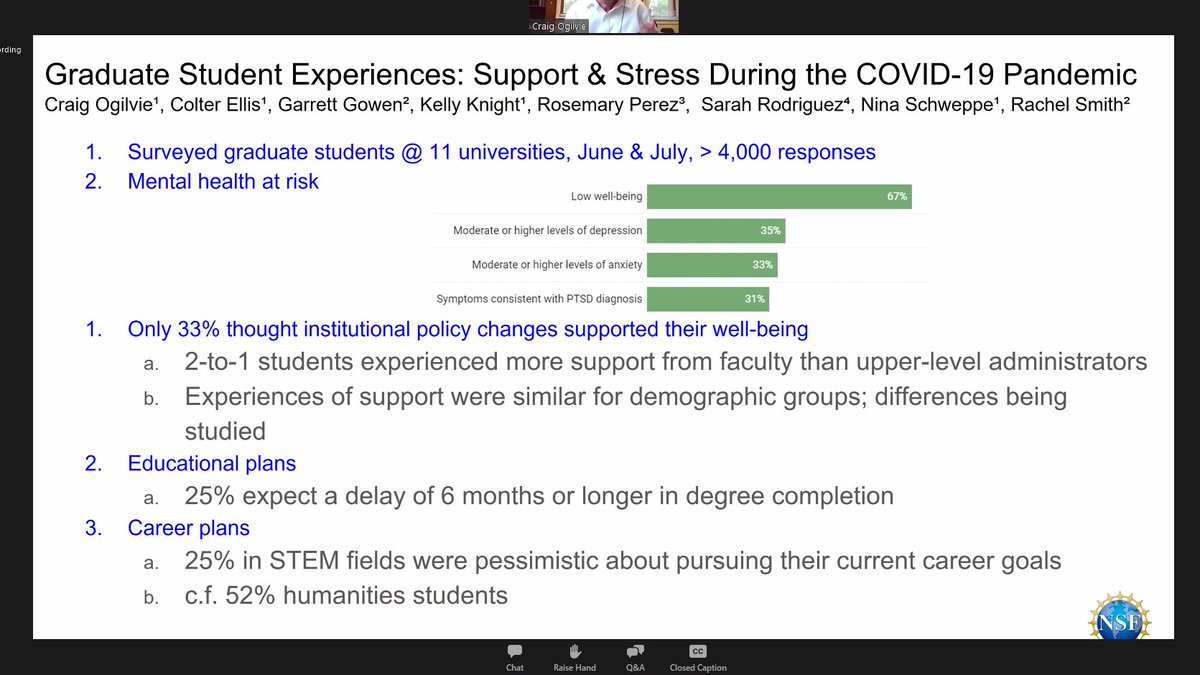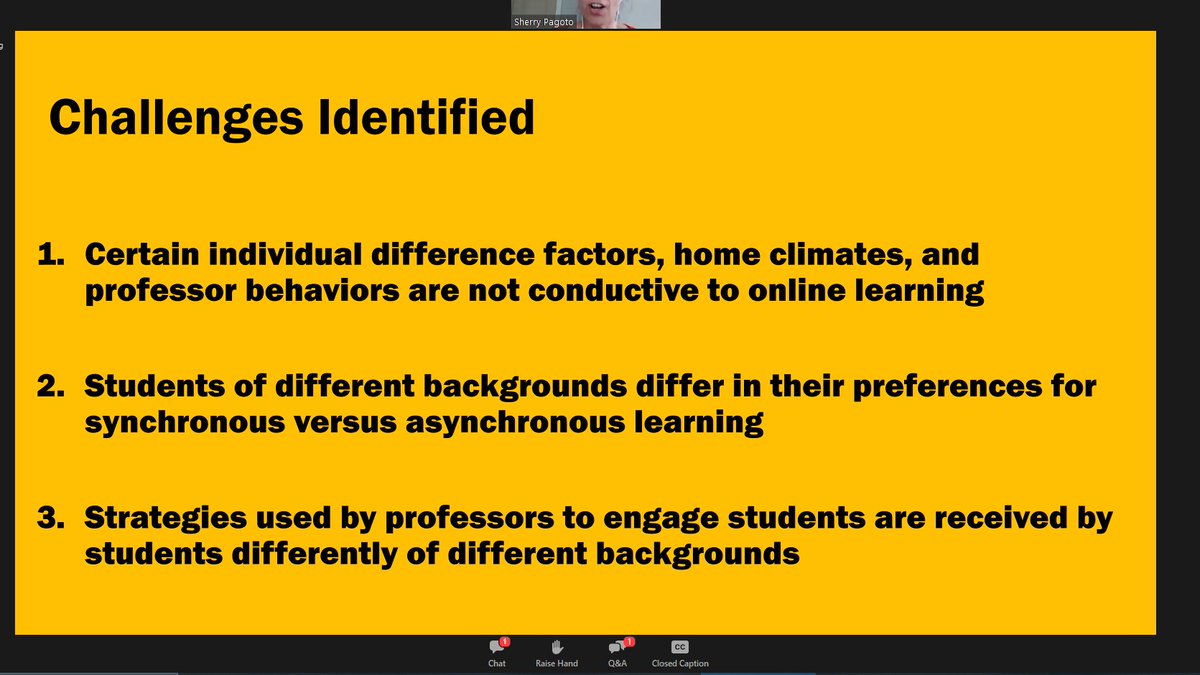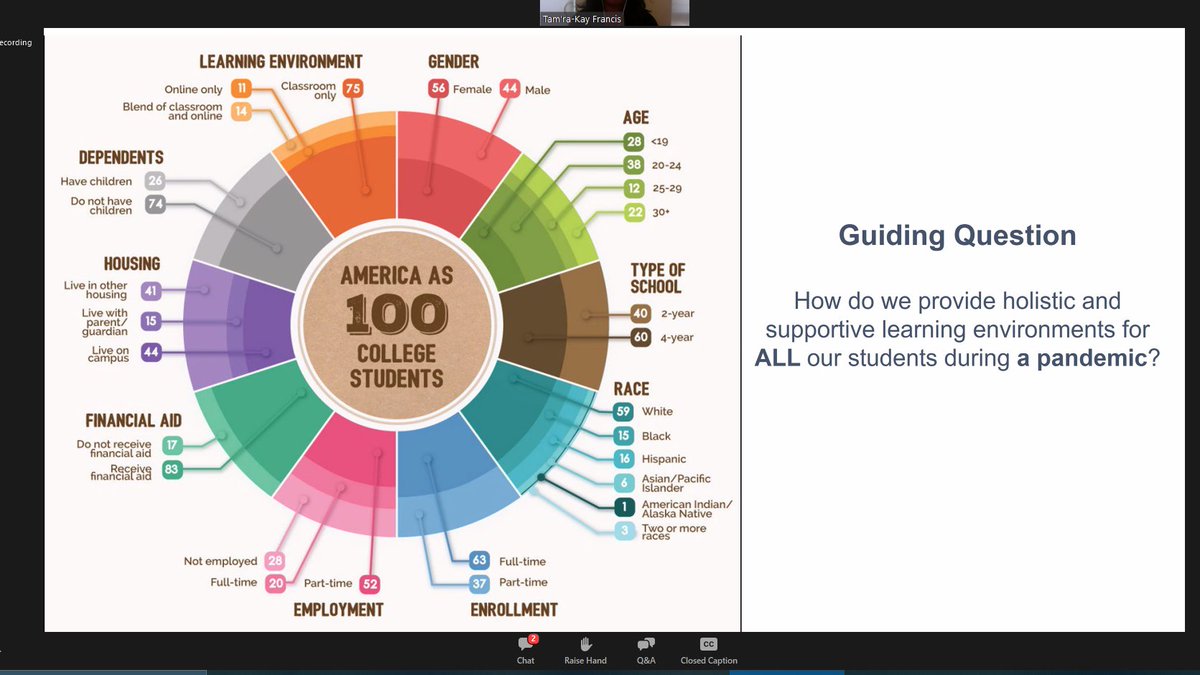@theNASEM Workshop series on #HigherEd& #39;s response to COVID just started.
@DeanCraigMSU starts us off with a really heavy slide - grad students are not ok.
#MentalHealth is worse, only 33% think that policies were strong enough to protect them, and 25% are seeing delays.
@DeanCraigMSU starts us off with a really heavy slide - grad students are not ok.
#MentalHealth is worse, only 33% think that policies were strong enough to protect them, and 25% are seeing delays.
He mentions that #gradStudents are starting to show early signs of #PTSD - a worrying sign for a population that has already been fighting mental health problems.
He recommends reading up on #firstresponder trauma literature and empathy burnout studies to better help students.
He recommends reading up on #firstresponder trauma literature and empathy burnout studies to better help students.
Felicia Jefferson of @FVSU looked at HBCUs and found that students wanted one-on-one interaction with professors and mentors to continue.
It didn& #39;t need to be specifically face-to-face, but especially in rural areas sustained individual attention was highly requested by students.
It didn& #39;t need to be specifically face-to-face, but especially in rural areas sustained individual attention was highly requested by students.
Of note, students appeared to be handle the switch to online better than the faculty - especially when it comes to adapting to new technology.
Yet despite this, students wanted to be back on campus more than faculty - especially those who are Pell Grant-eligible.
Yet despite this, students wanted to be back on campus more than faculty - especially those who are Pell Grant-eligible.
She also mentions that the population she studied has been disproportionately impacted by COVID - it& #39;s not just their schooling that has changed, but many have lost friends and family members and that takes a huge toll.
@DrSherryPagoto polled undergraduate students on the efficacy of the rapid switch to online learning and found 3 major factors:
They also noted that most of these factors disproportionately affect socioeconomically disadvantaged students and students of color.
They also noted that most of these factors disproportionately affect socioeconomically disadvantaged students and students of color.
She mentions that students really appreciated professors asking for feedback - going off script and asking input from and empathizing with students.
In unprecedented times, #BeKind. And not just with your students, a kinder research culture in general will not hurt us.
In unprecedented times, #BeKind. And not just with your students, a kinder research culture in general will not hurt us.
Cassandra Hart of @ucdavis mentioned that the focus on synchronous learning has been a particular struggle, especially with community colleges.
The inability of some students to be free of distractions during & #39;standard hours& #39; is something that benefits synchronous options.
The inability of some students to be free of distractions during & #39;standard hours& #39; is something that benefits synchronous options.
She also mentions that a lot of #communityCollege have been installing wifi hotspots in their parking lots of help increase access to online courses, but there are questions about how sustainable asking students to take classes from their car is.
A general summary of this first panel of the workshop is that students are not a monolith - each student is going to have a different preference depending on a ton of extenuating factors.
The following is what Viveka Brown of @SpelmanCollege considered when building up her online learning for the fall - important in there is building in iterative feedback and platforms that facilitate communication in the absence of in person contact
Her research is on math education - and specifically on how to humanize math education to make it seem more approachable.
One of the big things she recommends is clear learning goals (and repetition of them) as well as descriptive feedback.
One of the big things she recommends is clear learning goals (and repetition of them) as well as descriptive feedback.
@Irningsanctuary looked into trauma-informed pedagogy to help students have their basic human needs (mental health!) met as much as possible in the classroom.
Also it& #39;s not just educators that should get trauma-sensitivity training, all who interacts with students should too.
Also it& #39;s not just educators that should get trauma-sensitivity training, all who interacts with students should too.
"We can& #39;t give what we don& #39;t have" - we need to be able to recognize trauma as more than a physical injury. It can represent as loss of control or agency.
So empowering students to understand how coping works so they can realize that stress responses aren& #39;t personal failures.
So empowering students to understand how coping works so they can realize that stress responses aren& #39;t personal failures.
We don& #39;t need to be psychologists and therapists to do this - we just need to want to make learning human again.
(Also it can be very therapeutic for the professor at the same time as it empowers the student!)
(Also it can be very therapeutic for the professor at the same time as it empowers the student!)
@MaximizeEDU surveyed the faculty and TAs in #CompSci in the spring and found that despite having a lot of prior experience with online learning, they still had to experiment a lot of teaching techniques.
Primarily because prior online teaching didn& #39;t happen in emotionally fraught times - intentionally building psychological safety into the course and creating spaces to replace office hours.
Tam’ra-Kay Francis of @UW starts with a graphic of what students looked like prior to the pandemic - what changed in 2020?
Learning environment clearly did, but what else?
Learning environment clearly did, but what else?
To help manage the changes, STEM depts at @UW created PR2ISM ( http://pr2ism.org"> http://pr2ism.org ) to create equity-minded courses not only for the fall, but also for the future.
It& #39;s important to make coursework that intentionally tackled disparities beyond the COVID crisis.
It& #39;s important to make coursework that intentionally tackled disparities beyond the COVID crisis.
@CynthiaBrame brings up asynchronous collaborative software - without physical presence use of annotation software can help create a community in the classroom so students don& #39;t think they& #39;re taking a class alone.
She also brings up that student assessment is still an incredibly difficult question-
Ideal assessment paths tend to be more manageable in smaller courses, but large lectures are still the reality for many profs.
How do we isolate internet access from hurting student assessment?
Ideal assessment paths tend to be more manageable in smaller courses, but large lectures are still the reality for many profs.
How do we isolate internet access from hurting student assessment?
What about Chegg or Stack Overflow?
How do we assess ability to learn both individually and in groups?
Like almost any metric, there is no foolproof system yet
How do we assess ability to learn both individually and in groups?
Like almost any metric, there is no foolproof system yet

 Read on Twitter
Read on Twitter







